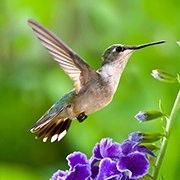Royal Glow
When we step into Phnom Penh, Cambodia, the Royal Palace is a must-see landmark. Situated along the Tonle Sap River, this palace complex dazzles with its golden roofs, elegant pavilions, and lush gardens.
In front, pigeons fly across a spacious courtyard filled with visitors, creating a lively yet peaceful atmosphere. It’s a place where history, architecture, and royal culture meet, and we can really feel the grandeur of Cambodia’s monarchy.
Tickets, Hours, and Entry Tips
Visiting the Royal Palace is straightforward. Tickets cost $10 per person. We enter through the southwest gate, which leads us to the southeast section of the palace open to visitors. Most of the palace, including the king’s residence, is off-limits.
The palace is open daily from 8:00 AM to 11:00 AM and 2:00 PM to 5:00 PM. The best time to visit is early morning, before crowds arrive and when the sunlight is perfect for photos. Remember to dress modestly—shoulders and knees should be covered. Comfortable walking shoes are a must because there’s a lot of ground to cover.
How to Get There
The palace is located in the center of Phnom Penh, near Sisowath Quay. We can get there by tuk-tuk, taxi, or motorbike, which are all inexpensive and convenient. From popular hotels along the riverside, it usually takes 5–10 minutes to reach the palace. If we are exploring by foot from the National Museum nearby, it’s only a 5-minute walk.
The Coronation Hall
Once inside, we first see the Coronation Hall, elevated on a two-level platform. Its roof reaches 49 meters high, crowned with a four-faced Buddha image. This hall is Cambodia’s ceremonial heart, similar to a traditional Golden Throne Hall in East Asia. Inside, the king’s throne is adorned with gold and diamonds and is used for major ceremonies, including meetings with officials, foreign guests, and diplomatic events. Standing here, we can imagine the grandeur of royal ceremonies.
Side Halls and Royal Treasures
Flanking the Coronation Hall are two side halls. The northern hall is the king’s waiting room, while the southern hall, open to visitors, displays palace artifacts. The highlight is the seven sets of traditional female costumes, each representing a day of the week. Colors range from red on Monday to purple on Sunday, providing insight into the royal ceremonial life.
The Banquet Hall and Napoleon III Pavilion
At the southeast corner, the Banquet Hall stands with open walls and a spacious interior. During royal feasts, the king sits on a raised platform while guests sit on the floor. Behind the hall is the Napoleon III Pavilion, a two-story European-style building gifted in 1869. This blend of Cambodian and French styles makes the palace architecture unique and visually appealing.
History of the Palace
The Royal Palace was first built after King Norodom moved the capital from Oudong to Phnom Penh in 1866. Originally a wooden structure, it expanded over the years, particularly from 1917 to 1919 under King Sisowath with French assistance. Today, the palace reflects a mix of Cambodian tradition and French influence, offering both historical value and stunning architecture.
Visiting the Silver Pagoda
Stepping out through a southern gate, we reach the Silver Pagoda, where royal Buddhist ceremonies take place. Its centerpiece is the Silver Hall, home to the Emerald Buddha. The floor is paved with thousands of silver tiles, giving the hall its name. In front stands a statue of King Norodom on horseback, and around the hall are stupas holding the remains of past kings and princesses, all finely decorated and pristine white.
A Peaceful Palace Experience
By midday, sunlight illuminates the cloisters, where we can admire murals depicting the Ramayana stories. Compared with Bangkok’s Grand Palace, Phnom Penh’s Royal Palace is smaller and simpler, yet this calmness adds to its solemnity. Walking here, we feel a connection to Cambodia’s royal heritage and centuries of tradition.
Tips for Lykkers
- Best visiting time: 8:00–10:30 AM to avoid crowds.
- Transportation: Tuk-tuk, taxi, or walk from nearby attractions like the National Museum.
- Entry fee: $10, with additional fees for photography in some areas.
- Dress code: Shoulders and knees covered; no shorts or sleeveless tops.
- Nearby attractions: National Museum, riverside cafes along Sisowath Quay, and Wat Phnom are within walking distance.
- Food & Drink: Bring water, as exploring can be warm; small snacks are available nearby.
Wrapping Up Our Royal Journey
Lykkers, exploring Phnom Penh’s Royal Palace and Silver Pagoda is more than just sightseeing—it’s like stepping into Cambodia’s living history. From shimmering golden halls to sparkling silver floors, from ceremonial costumes to sacred statues, every corner tells a story. Let’s take our time, soak in the royal atmosphere, and leave with memories full of wonder and inspiration. Together, we can feel the elegance and heritage of a kingdom that continues to thrive in modern Phnom Penh.
Royal Palace • Phnom Penh • Cambodia
Video by Yoann PIERRE

 · Travel Team
· Travel Team